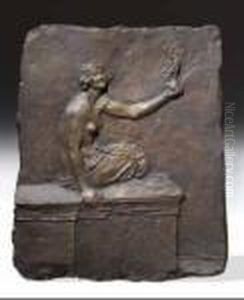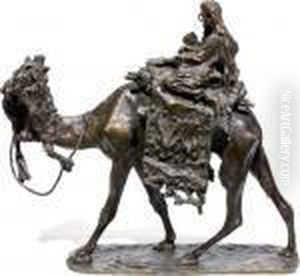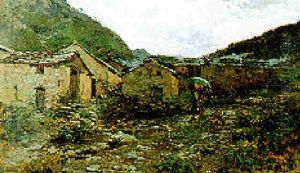Ernesto Bazzaro Paintings
Ernesto Bazzaro was an Italian sculptor born on May 13, 1859, in Milan, Lombardy. He was part of an artistic family, with his brother Leonardo Bazzaro being a well-known painter. Ernesto initially trained as a goldsmith, but his passion for sculpture led him to attend the Brera Academy (Accademia di Belle Arti di Brera) in Milan, where he studied under notable sculptors such as Vincenzo Vela and Cesare Zocchi.
Bazzaro's early work was influenced by the prevailing Romantic and Realist styles of the period. However, as his career progressed, he became associated with the Italian movement of Scapigliatura, which sought to shake off the academic constraints and promote an innovative and bohemian approach to art. His sculptures often depicted subjects from everyday life with a focus on the naturalistic representation of human figures and an expressive use of marble and bronze.
During his career, Bazzaro participated in various exhibitions, including the Brera exhibitions in Milan and the Venice Biennale. He received several commissions for public monuments, which allowed him to prominently display his technical skill and artistic sensibility. Among his notable public works is the Monument to Giuseppe Parini in Milan's Piazza Cordusio. He also created funerary monuments, which can be found in the Cimitero Monumentale di Milano, a testament to his reputation and ability to capture the emotional depth of his subjects.
Ernesto Bazzaro was also a teacher, imparting his knowledge and passion for sculpture to the next generation of artists. He was instrumental in shaping the Italian sculptural landscape at the turn of the 20th century. His work continued to evolve, displaying a mastery over form and composition that marked him as a significant figure in Italian sculpture.
Bazzaro died on March 18, 1937, in Milan. His legacy is preserved through his numerous sculptures displayed in public spaces, galleries, and museums, as well as through the influence he had on his students and the broader artistic community in Italy. His contributions to the development of modern Italian sculpture continue to be recognized and celebrated today.




